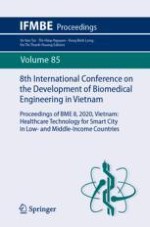This book presents cutting-edge research and developments in the field of biomedical engineering, with a special emphasis on results achieved in Vietnam and neighboring low- and middle-income countries. Covering both fundamental and applied research, and focusing on the theme “Healthcare technology for smart city in low- and middle-income countries,” it reports on the design, fabrication, and application of low-cost and portable medical devices, IoT devices, and telemedicine systems, on improved methods for biological data acquisition and analysis, on nanomaterials for biological applications, and on new achievements in biomechanics, tissue engineering, and regeneration. It describes the developments of molecular and cellular biology techniques, and statistical and computational methods, including artificial intelligence, for biomedical applications, covers key public/occupational health issues and reports on cutting-edge neuroengineering techniques. Gathering the proceedings of the 8th International Conference on The Development of Biomedical Engineering in Vietnam, BME 8, 2020, Vietnam, the book offers important answers to current challenges in the field and a source of inspiration for scientists, engineers, and researchers with various backgrounds working in different research institutes, companies, and countries.
